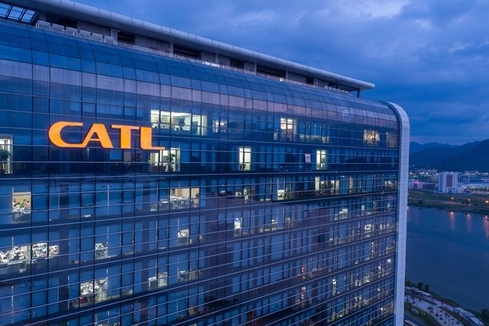Input 2021.01.22 12:33 | Revision 2021.01.22 13:42
Salary of about 6000 yuan (10.2 million won)
“Shipments have to be adjusted due to congestion in orders”
Overtime in February during the Lunar New Year holidays, double salary
China’s largest battery maker CATL (Ningdu’s Dai) offered more than twice the usual salary to workers who worked overtime without going to their hometown in February during the Lunar New Year holiday. This year’s Chinese New Year is February 12, which is the same as the Korean New Year’s Day, and 11 to 17 are designated as consecutive holidays.
The company said that it will be carrying out extra work during the Lunar New Year in order to meet the shipments due to a surge in orders at the end of the year. Some are interpreted as a measure following the Chinese government’s recommendation to refrain from moving during the holiday season to lower the risk of spreading the coronavirus infection.

The company said, “We prepared an incentive for everyone to remain at the company and continue working even during the Lunar New Year due to the surge in year-end orders.”
Headquartered in Ningde, Fujian Province in southeastern China, CATL has grown rapidly with the Chinese government’s policy to foster electric vehicles. Since 2016, the Chinese government has intensively supported Chinese battery manufacturers in a way that does not subsidize electric vehicles without Chinese company batteries. The company that has benefited the most is CATL.

CATL is currently supplying batteries to overseas automakers such as Volkswagen and BMW, as well as Tesla, the world’s number one electric vehicle market. Tesla’s Model 3 and Model Y at its Shanghai plant in China have CATL batteries. Last month, CATL announced a plan to invest a total of 39 billion yuan (about 6.64 trillion won) to expand the production capacity of lithium-ion batteries.
In China, the world’s largest automobile market, the proportion of electric vehicles is gradually increasing. According to an announcement by the China Automobile Manufacturers Association (CAAM), the annual automobile sales volume in China last year was 25.31 million units, down 1.9% from the previous year. Sales declined for three consecutive years.
However, sales of new energy vehicles including electric vehicles increased. According to CAAM statistics, sales of new energy vehicles in China last year were 1.37 million units, an increase of 10.9% from a year ago. New energy vehicles refer to pure electric, plug-in hybrid (PHEV), and hydrogen fuel cell vehicles.
The proportion of new energy vehicles out of all vehicles sold in China last year was 5.41%, higher than 4.68% in 2019. The Chinese government has announced that it will increase the proportion of electric vehicles to 25% of all vehicles by 2025.
